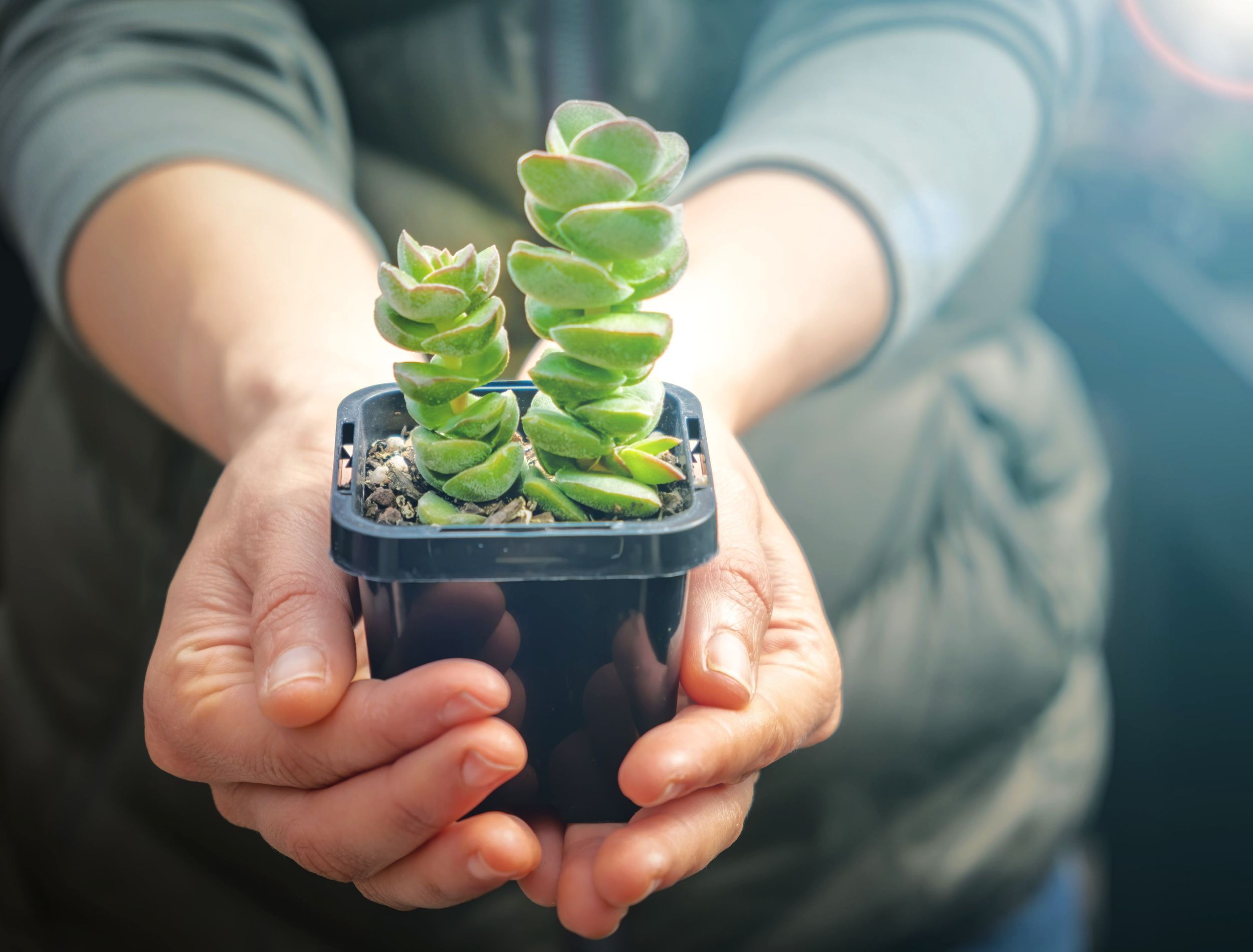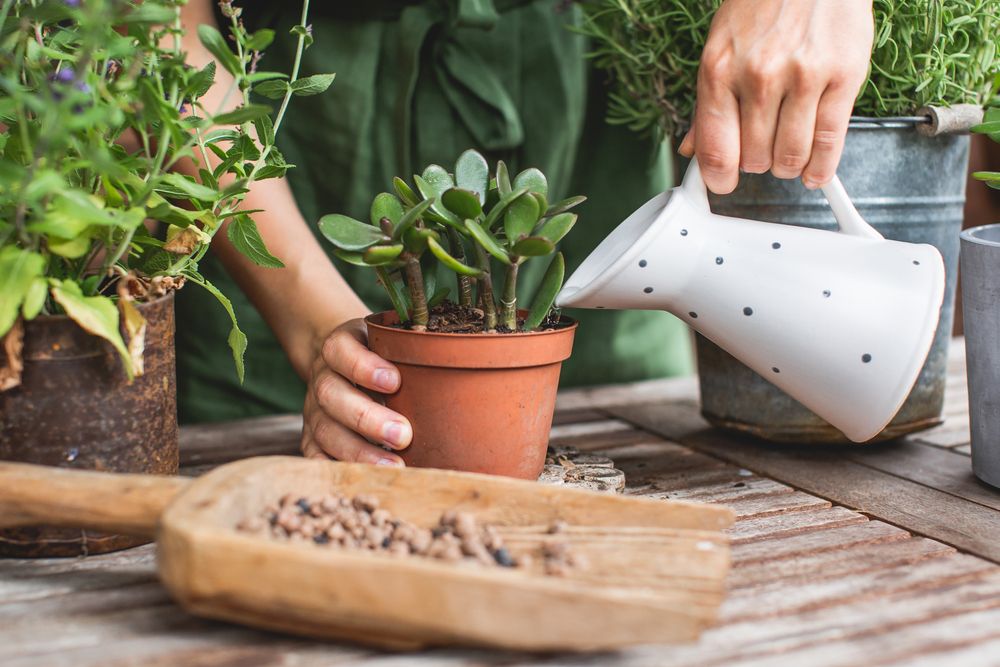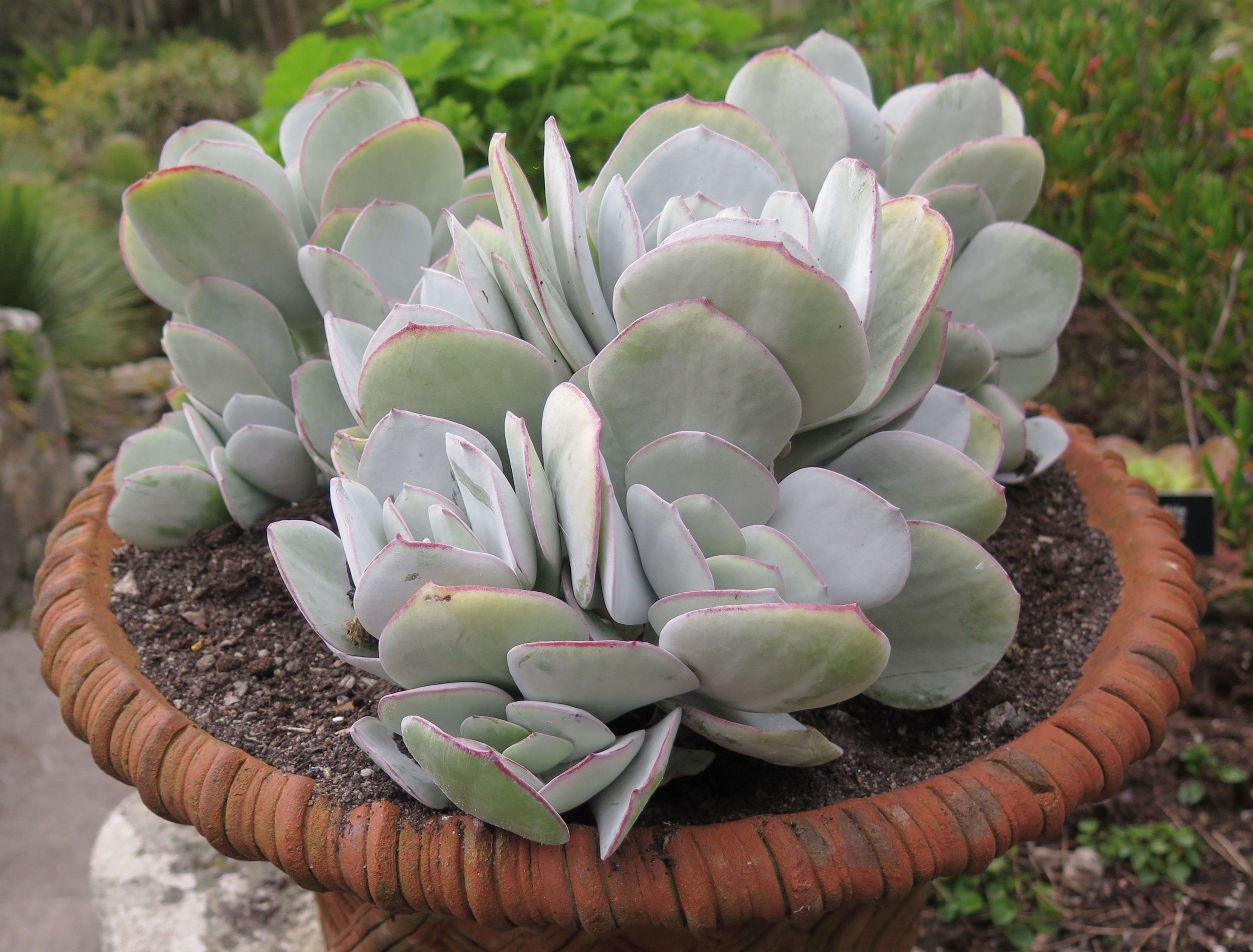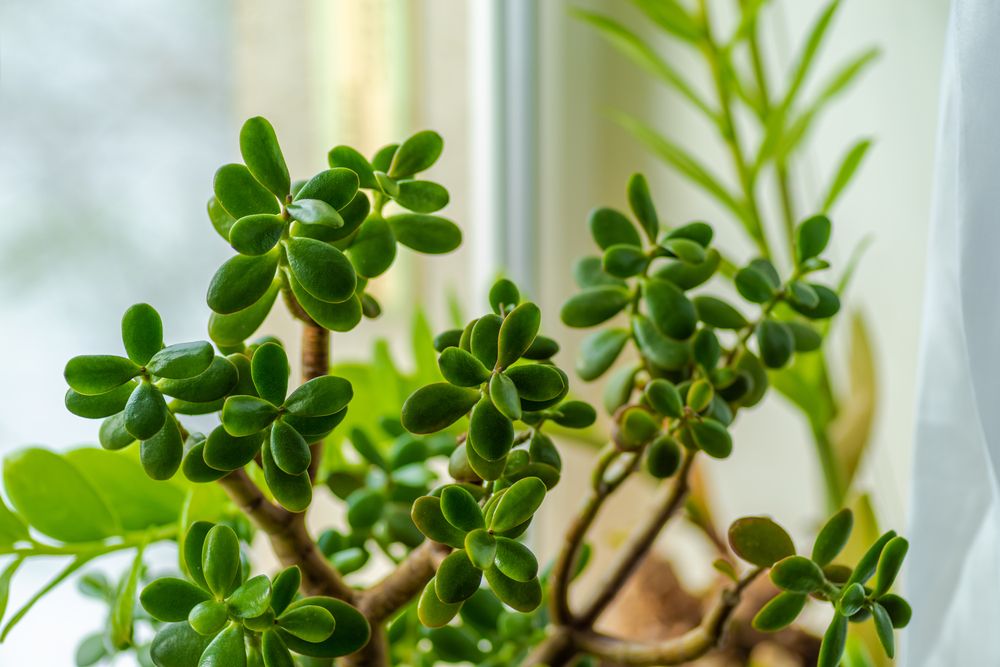Have you ever wanted to adorn your home with a succulent that gives off a tropical feel? Look no further than the jade plant! There are many varieties of this plant, and they all have different features and tips for care. Jade belongs to the succulent family, and have a history of growing in sloped rocky areas of the hottest parts of South Africa.
However, your jade doesn't need dry, scorching temperatures to thrive. They grow well indoors if you follow these simple tips on the right amount of light, water, and humidity.
Jade Plant
Image credits: Krichevtsevavia Shutterstock
The plant most commonly referred to as the jade plant is aptly named Crassula ovata. It has thick egg-shaped leaves and is sometimes called a money or friendship tree.
This jade grows well in small terracotta pots with restricted root space, as it stores water in every part of the plant, from stem to leaves. It can grow up to 2 to 6 feet tall, and leaves can reach 1 to 3 inches in length.
Water
This plant is one you do not want to overwater! Once every two to three weeks is sufficient. In the spring and summer, increase how much water your jade gets as it blooms more readily during these seasons. Ensure you only water when the topsoil and lower parts are dry.
You can even do the wooden chopstick test: place a stick vertically down in the soil. If it comes up dry and clean, your jade is water-deprived. Use a well-draining pot with a hole at the bottom for excess water residue and to help keep your plant healthy. In addition, use room temperature water rather than cold. Cold water will shock your plant and cause the leaves to drop off.
Crassula ovata blooms more slowly in the winter and goes into a hibernation period. Watering your plant once or twice a month will sustain it and keep it happy. Jade can tolerate some neglect during the slow-growing period.
Light
The amount you water your jade will depend on not only the season of the year but also the available light. Most succulents, including jade, need at least four to six hours of sunlight. New plants prefer indirect sun, but well-established plants do well in full sun, so place them near a light source. A kitchen window sill or a sliding patio door is ideal.
Humidity
For a good humidity level in the winter, this jade prefers 45 to 55 degrees Fahrenheit and up to 85 degrees during the warmer spring and summer months.
Soil Type and Fertilizing
When looking for soil, opt for a loose, free-draining mixture specially designed for succulent plants.
Fertilizing your jade plant is necessary for full, leafy blooms. An easy method is using a regular liquid fertilizer made especially for succulents. Remember to water your plant before and after applying your fertilizer so it can properly absorb the nutrients.
Silver Jade
Image credits: Peter Turner Photography via Shutterstock
Crassula arborescens, or the silver dollar jade, is small compared to other succulents and perfect to fit into a sunny nook of your place. Its flat, oval-shaped leaves are silver/gray and framed with a beautiful pink outline. They make a great contrast to other green succulents when placed in an arrangement.
Silver jade's porous leaves help the plant to tolerate drought and extreme heat conditions. This plant also produces small white flowers in the fall and winter seasons.
Lighting
The recommended light conditions are partial sun and subtle indoor lighting. So, this low-maintenance plant is ideal if your home doesn't bask in full sun.
Pots
The best pots for jade plants are clay ones with holes at the bottom for drainage. This jade bodes well when planted in rich potting soil and can be fertilized once or twice during the growing seasons with organic fertilizers.
Watering and Leaf Care
Water these small plants sparingly and watch out for root rot. Avoid overwatering by waiting until the surface and under the soil are completely dry. Signs of overwatering are soft mushy leaves that begin to droop. If your leaves are dying, gently cut them off with a clean knife, so fungus or other diseases don't invade your plant.
Pruning
Jades benefit and thrive more when pruned. Cut back the stems during the spring blooming season, and the trunk can better support the weight of its heavy leaves.
Jade is susceptible to some pests, so watch out for aphids, spider mites, and mealybugs.
Note: The silver dollar jade and Crassula ovata are highly toxic to dogs, cats, and humans, so keep the whole family safe and place them out of reach.
Succulent Jades Are Truly Magnificent
Image credits: TSViPhoto via Shutterstock
Succulents are beautiful plants that can spice up your life and give your living space a tropical feel. There are so many to choose from, ranging in size from tall jades sculpted in the shape of bonsai trees to smaller versions that don't take up much space in your home.
Jades also have a variety of colors: dark or emerald green to grey and silver, and that's not even including the bright pops of color found in the blooming flowers! When growing these beauties, you only need to be mindful of watering, lighting, and humidity conditions.
Will you try growing the crassula ovata or its cousin, the crassula arborescens?
If you have any tips or tricks on caring for jade plants, please leave them in the comments below.




